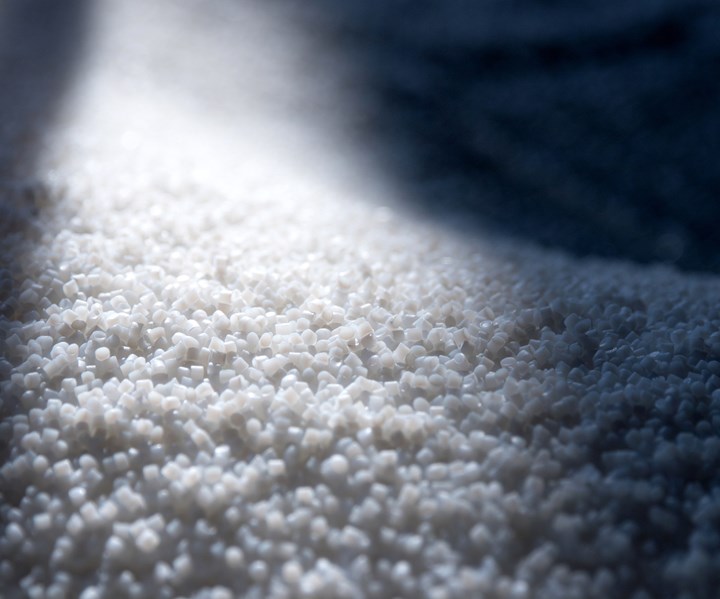New Bioplastics Could Lead to Tougher, More Versatile Medical Implants
Researchers at U.K.’s University of Birmingham have developed a type of nylon bioplastic that is tough and strong and easy to process for medical implants.
Based on a type of nylon, is a new bioplastic recently developed by U.K.’s University of Birmingham that is said to be tough and strong and also easy to process and shape for use in medical implants.
According to the researchers, the material’s shape memory properties enable it to be stretched and molded but able to reform into its original shape when heated. This makes it useful for medical devices such as bone replacements, where minimally invasive surgery techniques require additional flexibility in implant materials.
Biocompatible polymers are widely used in medicine, from tissue engineering to medical devices such as stents and sutures. Although much progress has been made in the area of resorbable or degradable materials that are broken down by the body over time, there are still only a handful of non-resorbable polymers that can be used for longer-term applications.
Existing non-resorbable biomaterials, like nylons, currently commercially available suffer from a variety of limitations. Metal implants, for example, can wear poorly, leading to particle fragments breaking off, while composite materials can be difficult to process or extremely expensive.
The new material was developed in the University’s School of Chemistry, by a team investigating ways to use stereochemistry—a double bond in the backbone of the polymer chain—to manipulate the properties of polyesters and nylons. It reportedly can be made using standard chemistry techniques and offers a stable, long-lasting option, with mechanical properties that can be tuned for different end products.

Said senior researcher, professor Andrew Dove, “This material offers some really distinctive advantages over existing products used to manufacture medical devices such as bone and joint replacements. We think it could offer a cost-effective, versatile and robust alternative in the medical device marketplace.”
The amorphous structure of the material is yet another advantage, according to Josh Worch, the postdoctoral researcher who led the work. “For many plastics, including nylon, the toughness is often dependent on their semi-crystalline structure, but this also makes them harder to shape and mold. However, our new plastic is as tough as nylon, but without being crystalline so it is much easier to manipulate. We believe this is only possible due to the way we have used stereochemistry to control our design.”
The research team were able to design and produce the plastic, which is now covered by a patent, and test it in rats to prove its biocompatibility. The team now plan to explore further ways to fine tune the material and its properties before seeking a commercial partner.
For commercial or licensing enquiries contact: Francesco M. Colacino, email: F.Colacino@bham.ac.uk
Related Content
-
Compact Solution for Two-Component Molding
Zahoransky’s new internal mold handling technology foregoes the time, space and money required for core-back, rotary table or index plate technologies for 2K molding.
-
Krones Acquires Netstal
Krones adds PET preform injection molding to its bottle blowing and filling capabilities, as well as cap molding and expansion into medical, food and other markets.
-
3D Printed Spine Implants Made From PEEK Now in Production
Medical device manufacturer Curiteva is producing two families of spinal implants using a proprietary process for 3D printing porous polyether ether ketone (PEEK).
















